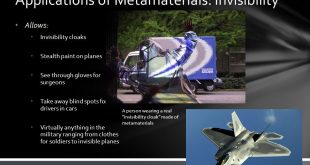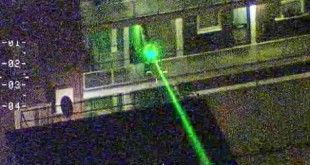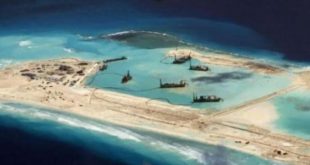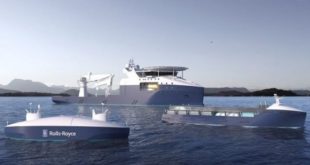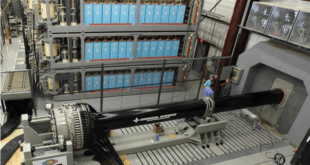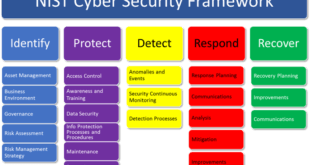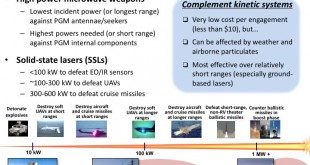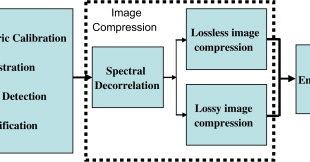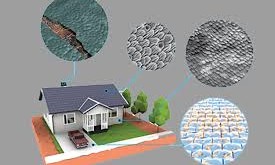Stealth technology has proven to be one of the effective approaches to enhance the survivability of Aircrafts. Aircraft/helicopter designers are making them stealthier by reducing their signatures; viz. visual, aural, infrared (IR), and RADAR cross section. Advancements in stealth technologies, as demonstrated by the very low RCS of stealth aircraft …
Read More »Monthly Archives: July 2020
Quantum Gravity Sensor technology advancing for oil, gas and mineral exploration, resilient maritime navigation to brain mapping
Quantum sensors are measuring device that takes advantage of quantum correlations, such as states in a quantum superposition or entanglement, for better sensitivity and resolution than can be obtained by classical systems. QP will boost the capabilities of all sorts of sensory devices, such as gravimeters, which are used to …
Read More »Growing Threat of Non Lethal Weapons including Laser Dazzlers and Tasers employed by Military and Security to disorient, temporary blind or set to fire the adversaries
Recently the Directed Energy Weapons (DEWs), especially laser DEWs are being developed as non lethal weapons. DEW is a system that uses Directed Energy primarily as a means to incapacitate, damage, disable or destroy enemy equipment, facilities and/or personnel. Directed energy has the potential to yield cost effective weapons that …
Read More »China’s building and militarizing of disputed islands inspite of rival territorial claims and US calling them illegal, is leading to Naval confrontations in South China Sea
China has caused alarm among its neighbours and in Washington by erecting military installations on what were previously reefs and partially-submerged islets in the strategically-important waters. Delfin Lorenzana, Philippine defence secretary, said that Beijing had agreed “some time ago” that it was “not going to militarise those reclaimed islands”. Trump’s …
Read More »Navies are testing Unmanned Autonomous vessels for COLREGs ( International Regulations for Preventing Collisions at Sea )
Autonomous vessels are one of the newest things in marine technology and many large organizations and companies are currently researching and testing unmanned vessels. There is a possibility that in a few years we will see unmanned vessels sailing in international waters. US Navy recently launched a fully autonomous, …
Read More »Supercapacitors critical components in Laser Directed Energy Weapons, Railguns and Electromagnetic Aircraft Launch System (EMALS)
Batteries are preferably to be used under circumstances where there is no possibility for charging, and besides this, in fields where it is important to store energy given the smaller mass and volume. Military applications of batteries include radio appliances, lamps or most electricity powered devices and equipment. Supercapacitors, …
Read More »NIST Cybersecurity Framework Improving Critical Infrastructure Cybersecurity by managing it’s cyber risks
Cybersecurity Ventures predicts cybercrime will cost the world in excess of $6 trillion annually by 2021, up from $3 trillion in 2015. The NIST Framework for Improving Critical Infrastructure Cybersecurity, commonly referred to as the NIST Cybersecurity Framework (CSF), provides private sector organizations with a structure for assessing and improving …
Read More »Laser directed energy weapons technology breakthroughs enable them to be deployed on Trucks, Warships and Airplanes
The Laser Directed Energy Weapons (DEWs) offer a transformational ‘game changer’ to counter asymmetric and disruptive threats, while facing increasingly sophisticated traditional challenges. Laser technology provides major advantages for military applications over kinetic weapons due to High precision and rapid on-target effect, precise and scalable effects, avoidance of collateral damage …
Read More »Image compression systems becoming essential components on board satellites
Remote sensing of the environment, and especially Earth observation, is witnessing an explosion in terms of volume of available observations, which offer unprecedented capabilities towards the global-scale monitoring of natural and artificial processes. Satellite imaging payloads, mostly operate a store-and-forward mechanism, whereby the captured images are stored on board …
Read More »DARPA’s ELM developing Living Structural Materials for self growing & self repairable smart buildings and smart military bases on demand
The cities of today are built with concrete and steel between they are responsible for as much as a tenth of worldwide carbon emissions. Before they ever reach a construction site, both steel and concrete must be processed at very high temperatures – which take a lot of energy. And …
Read More » International Defense Security & Technology Your trusted Source for News, Research and Analysis
International Defense Security & Technology Your trusted Source for News, Research and Analysis
